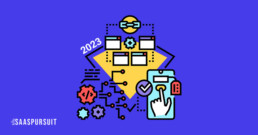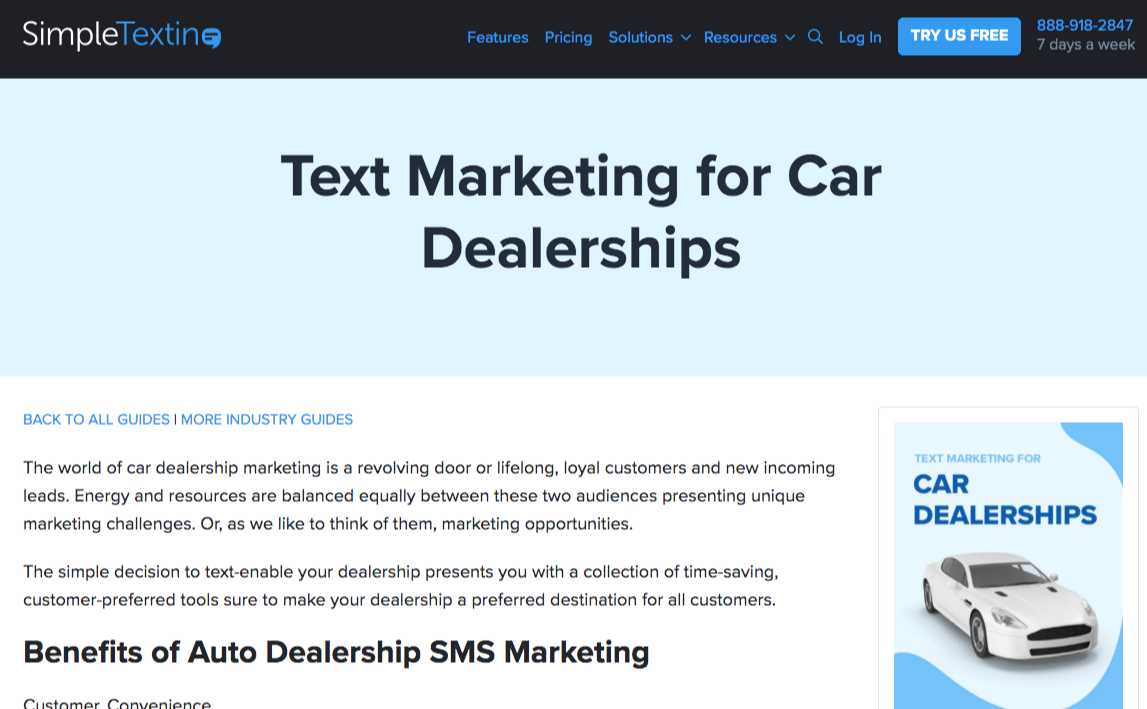What is SaaS Marketing? Beginners Guide 2023
SaaS or Software as a service, is becoming increasingly popular with businesses of all sizes. Its cost-effectiveness and flexibility make it the perfect option for companies to scale up their operations quickly.
As such, marketing SaaS has become an important focus for many organizations. This article will provide a beginner's guide to SaaS marketing in 2023. We'll cover everything you need to know, from basic concepts and strategies to tips and tricks on getting the most out of your campaigns and building a better marketing strategy for your SaaS.
What is SaaS Marketing?
SaaS marketing is a type of marketing using various tools and techniques to promote a company's software as a service to potential customers and clients.
This might include creating content, optimizing websites, utilizing influencers, and social media campaigns.
Saas marketing aims to create awareness of the product and attract potential users who can become long-term customers. It’s important to remember that SaaS marketing isn't just about getting people to buy it but also engaging them with content, education, and support so they have a positive experience and remain loyal customers.
What is the Difference Between SaaS marketing and traditional marketing?
SaaS marketing is different from traditional marketing in that it’s focused on creating and delivering an experience for the customer rather than simply selling a product or service. This type of marketing relies heavily on engaging with customers, providing educational materials and resources, and creating content to help them understand how to use your software solution.
Additionally, SaaS marketing requires a more customer-centric approach. This involves getting to know your customers, understanding their needs and wants, and providing them with the right tools to help them succeed.

Another key difference is that SaaS marketing often relies heavily on digital elements such as social media, search engine optimization (SEO), and online advertising. Traditional marketing tactics may also be used, but the emphasis is almost entirely on other channels, such as offline marketing - including print, radio, and television.
What are the Key Components of a SaaS Marketing Strategy?
When creating your SaaS marketing strategy, there are several key elements you should keep in mind:
1. Understand Your Audience
Knowing your target customers will help you create content that appeals to them. This may involve researching their pain points and understanding their needs so you can create content that speaks directly to them.
2. Establish Your Goals
Before launching any campaigns, it's important to determine your goals and how they will be measured. Whether you’re looking to generate more leads or increase revenue, having measurable targets will help you stay on track and measure the success of your campaigns.
3. Use Multiple Channels
Multiple channels are essential for SaaS marketing. This may include social media, SEO, email, influencers, etc. Each channel should be thoughtfully planned out with specific goals in mind so you can maximize your efforts.
4. Monitor and Adjust
As with any marketing strategy, keeping track of your results and adjusting as needed is important. This may involve testing different strategies or tweaking existing ones to ensure you get the most out of your campaigns.
SaaS Marketing Terminologies You Need to Know
There are a few terms you should familiarize yourself with when it comes to SaaS marketing:
1. Customer Acquisition Cost (CAC): This is the cost of acquiring a new customer for your business. It includes costs such as advertising, sales team salaries, and more.
2. Conversion Rate Optimization (CRO): This involves optimizing your website, content, and other elements to make it easier for customers to convert.
3. Customer Retention Rate (CRR): This measures how many of your existing customers remain loyal to your product or service over time.
4. Lead Nurturing: This is the process of actively engaging with potential customers and providing them with the information they need to make a decision.
5. Referral Program: This involves incentivizing current customers to refer new people to your business, often by offering discounts or rewards.
6. Retargeting: This is the practice of targeting ads to customers who have already interacted with your business in some way.
7. A/B Testing: This is a method of testing different versions of your marketing campaigns to determine which one performs the best.
By familiarizing yourself with these and other SaaS marketing terms, you’ll be better equipped to create successful campaigns to drive your business growth.
Basic SaaS Marketing Metrics You Should Regularly Review
Your SaaS marketing efforts need to be regularly monitored and adjusted as needed. Here are some key metrics you should track:
1. Website Traffic & Lead Generation: This tells you how many people are visiting your website, which pages they view, and how many leads you generate from them.
2. Customer Acquisition Cost: This metric shows how much it costs to acquire a new customer for your business.
3. Conversion Rate: This measures the percentage of website visitors that convert into customers or leads.
4. Customer Retention Rate: This tells you how many existing customers remain loyal to your product or service over time.
5. Referral Rate: This metric shows how many people refer new customers to your business.
6. Churn: This tells you how many customers have stopped using your service.
7. Activation: This measures the percentage of customers who successfully sign up for and use your product or service.
8. Net Promoter Score: This metric measures customer satisfaction by asking customers to rate their experience with your product or service.
By regularly reviewing these metrics, you’ll be able to identify areas of improvement and adjust your strategies accordingly.
10 Best SaaS Marketing Srategies
Whether you’re a beginner or an experienced SaaS marketer, there are a few key strategies you should consider implementing. Here are 10 of the best SaaS marketing strategies for beginners.
1. Community Building
The power of a strong community should not be underestimated as a way to drive awareness and engagement.
Use social media platforms, blogs, forums, and webinars to start the conversation and build relationships with your target audience. For example, offering helpful advice, responding to comments/questions, and providing exclusive content can help you build a strong connection with your prospects.
2. Influencer Marketing
Utilizing influencers to promote your product or service can help you reach a wider audience and get more exposure for your brand.
Look for influencers who have an active presence in your industry, whose content resonates with your target audience, and who are willing to collaborate on creating content that adds value to their followers.
3. Identify Customer's Pain Points
Understanding your target customers' challenges and frustrations can help you create targeted messaging that resonates with them.
Pay attention to customer feedback, use surveys and interviews to identify pain points, and study your competitors’ strategies to understand better what will attract prospects. You must monitor Net Promoter Score (NPS), customer satisfaction score, and other customer feedback metrics.
4. Targeted Ads
Paid advertising is an effective way to reach your target audience quickly and efficiently. With targeted ads, you can focus on specific demographics and segments of customers who are most likely to be interested in your product or service.
Research the best platforms and networks to find out which will work best for your business, create compelling ad copy, optimize your campaigns regularly, and track results to maximize your investment. For example, using Facebook ads will help you increase leads, while LinkedIn ads will help you find qualified ambassadors, promoters, and influencers to target.
5. Define your content marketing strategy
Content is essential to any successful marketing strategy. It helps build awareness, engages customers, and drives conversions.
Create content that adds value to your target audience and meets their needs. Focus on creating useful content, such as blog posts, infographics, videos, podcasts, webinars, e-books, etc. that can be shared and help you build a loyal following.
6. Offer Free Trials
Offering free trials or demos is a great way for people to try out your product or service.
It will also help them understand what it does better, how it works, and why they should choose your solution over the competition. Additionally, free trials are a great way to get people invested in your product and increase the chances of them becoming paying customers down the line.
7. Utilize SEO Strategies
SEO is an important part of any marketing strategy as it helps you reach the right people at the right time with the right message. You can hire a SaaS SEO agency to improve your site's visibility and rankings.
Make sure you optimize your website for search engines, create relevant content for your target audience, and use keywords likely to be searched by people looking for solutions like yours. Additionally, link-building strategies can help increase the visibility and trustworthiness of your website.
8. Offer Referral Programs
With referral programs, existing customers can refer your product or service to others and get rewarded.
This is a great way to encourage word-of-mouth marketing, reach new audiences, and build customer loyalty. Make sure you communicate the referral program clearly, incentivize people with rewards that are attractive enough to entice them, track results, and analyze how effective the program is.
9. Leverage Social Media
Social media is a powerful tool for gaining visibility and engaging with your target audience.
Make sure you have a presence on the right platforms, create content relevant to your customers, engage with them in meaningful conversations, and respond quickly when they have questions or feedback. Use social media to promote your content and campaigns, share customer success stories, and connect with influencers to expand your reach.
10. Analyze and Optimize
To ensure that your SaaS marketing efforts are successful, tracking results closely and analyzing the data you collect is important.
This will help you identify what’s working and what’s not so that you can adjust your strategy accordingly and improve performance. Additionally, use A/B testing for campaigns and content to measure which variations perform best with your target audience. With the right data and insights, you can optimize your marketing efforts and maximize ROI.
SaaS Marketing FAQs
How do I identify a SaaS product?
A SaaS product is a software-based product delivered via the Internet as a service. It generally requires no installation and can be accessed by any device with an internet connection, often through a web browser or mobile app.
Some common examples include web hosting services, cloud storage solutions, project management tools, customer relationship management (CRM) systems, and online learning platforms.
How does SaaS attract customers?
SaaS businesses can attract customers by creating compelling content and marketing materials, offering free trials or demos, utilizing SEO strategies, implementing referral programs, leveraging social media platforms to build visibility and engagement, and optimizing their efforts based on analytics. Additionally, forming strategic partnerships with other companies in the same industry can help expand the reach and bring more qualified leads to your door.
What is the SaaS business model?
The SaaS business model typically provides access to the software as a service instead of selling copies of the software. The subscription-based approach allows customers to pay for access to the service regularly, usually monthly or annually. This model helps create predictable revenue streams so businesses can plan their finances and operations accurately.
What are B2B SaaS companies?
B2B SaaS companies are software-as-a-service businesses that provide solutions to other businesses (rather than end consumers). Examples of B2B SaaS include marketing automation tools, customer service support platforms, collaboration tools, HR software, and financial management services. Some popular B2B SaaS companies are Salesforce, Hubspot, Atlassian, Zendesk, and Google Cloud.
What is the best way to sell SaaS products?
The best way to sell SaaS products is by creating an effective marketing strategy and delivering a consistent, high-quality product. Identifying your target audience and creating content that speaks directly to them is important. You should also focus on building visibility with SEO, leveraging the power of social media, forming strategic partnerships with other companies, and optimizing your campaigns based on analytics. Additionally, offering free trials or demos can be very helpful in attracting new customers.
What makes a SaaS product successful?
A successful SaaS product solves customer problems and meets their needs with ease. It should be intuitive, reliable, secure, and feature-rich to deliver exceptional value. Additionally, the pricing model should make sense for customers so that they can easily access the service without feeling overwhelmed by costs.
Why is SaaS best for small businesses?
SaaS is ideal for small businesses because it requires minimal upfront investments, offers scalability and flexibility, and allows companies to pay as they go. This makes it easier to control costs while still accessing the features and functionality of a robust software solution.
Additionally, since SaaS solutions are cloud-based, companies can access them from anywhere with an internet connection, eliminating the need to purchase or maintain additional hardware.
Finally, SaaS solutions are often highly automated and require minimal maintenance, which reduces the time and resources needed to manage them.
This means businesses can focus on other growth areas instead of worrying about software upkeep.
What is the difference between cloud and SaaS?
The main difference between cloud and SaaS is that cloud computing involves the delivery of hardware or software as a service via the internet, while SaaS is specifically a type of cloud computing that provides access to applications over the internet. In other words, cloud computing encompasses a wide range of services, including SaaS.
19 Actionable SaaS Link Building Strategies For 2023 [Free Checklist & Templates]
This is the most detailed guide to SaaS link building online.
So if you want to:
- Build scalable backlinks to your SaaS blog and landing pages
- See examples of the world's best SaaS link building campaigns
- Increase new demos and trials from new customers
You'll love detailed strategies in today's guide.
Click on any link below to jump to a section.
Let's get started.
Steal Your Competitors Best Keywords Using Capterra
Capterra has the most number of software reviews on the web.
As of now, their "Software Categories" contain 850+ different categories.
That's a lot!
And you can take advantage of what they're currently doing.
How?
First, if you don't know who your competitors are or if you're looking for additional ones to do research on, go through the list of SaaS companies in Capterra.
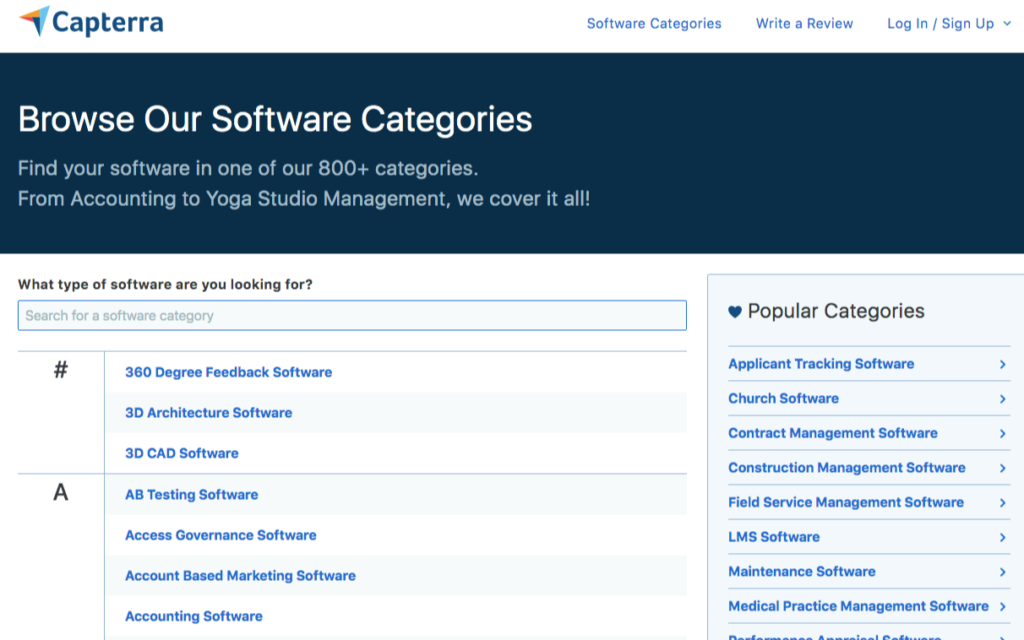
Once you find these related software businesses, you can check their backlink profiles using Ahrefs.
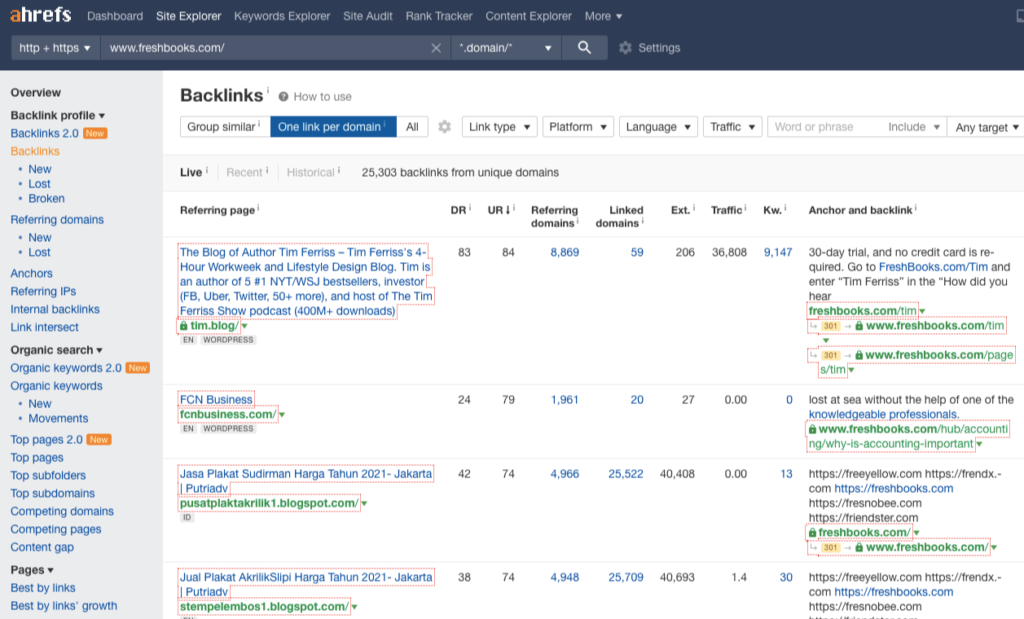
This can give you an idea of what types of backlinks they get for their SaaS website. And what niche-specific link building strategies they're using to get more targeted backlinks.
Secondly, get keyword insights from Capterra.
Most SaaS companies have the challenge of determining what best keywords to target for their landing pages.
Take EnsoData, for example. They offer artificial intelligence (AI) scoring and analysis for sleep technicians. They have clear service offerings, but they're not targeting specific niche keywords for their pages.
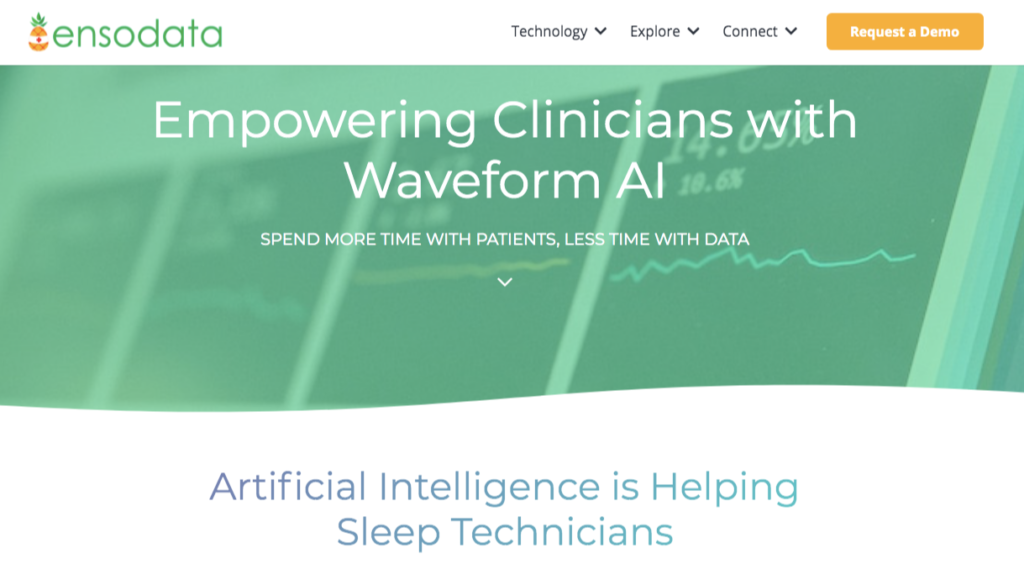
This happens mostly for SaaS with very specific core offerings.
The way to solve them is to let Capterra do the keyword research for you.
Looking at their Capterra page, you can easily find some core keywords.
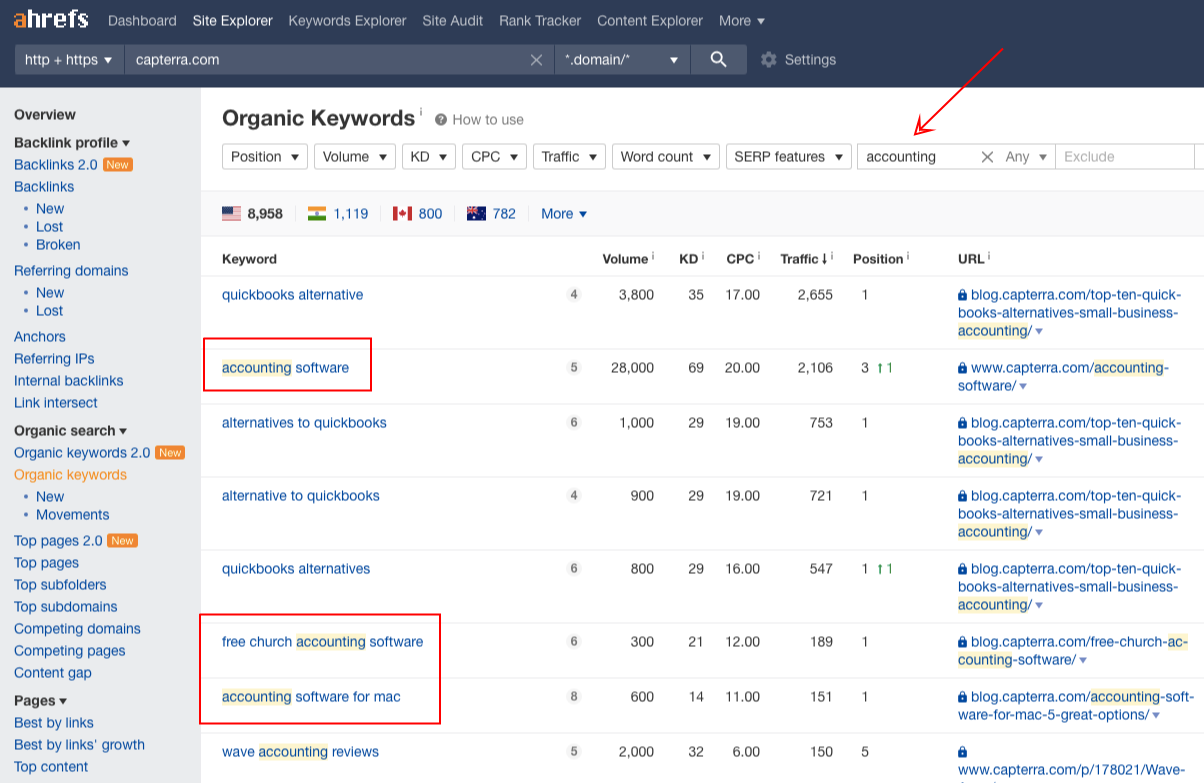
By doing these two things: finding competitors on Capterra's software categories and discovering the best keywords on Capterra pages, you can publish content assets that are likely to rank and earn links along the way.
Use Help Center To Earn Fresh Links
You build trust from new customers when you help people with their problems.
That increases demos and trials for your SaaS.
One way to achieve that is to use the Help Center of Knowledge Base.
Take a look at Hubspot and Uber. Both these two SaaS companies effectively use Help Centers for many purposes:
Show their existing customers how to use their products and features to solve their problems.
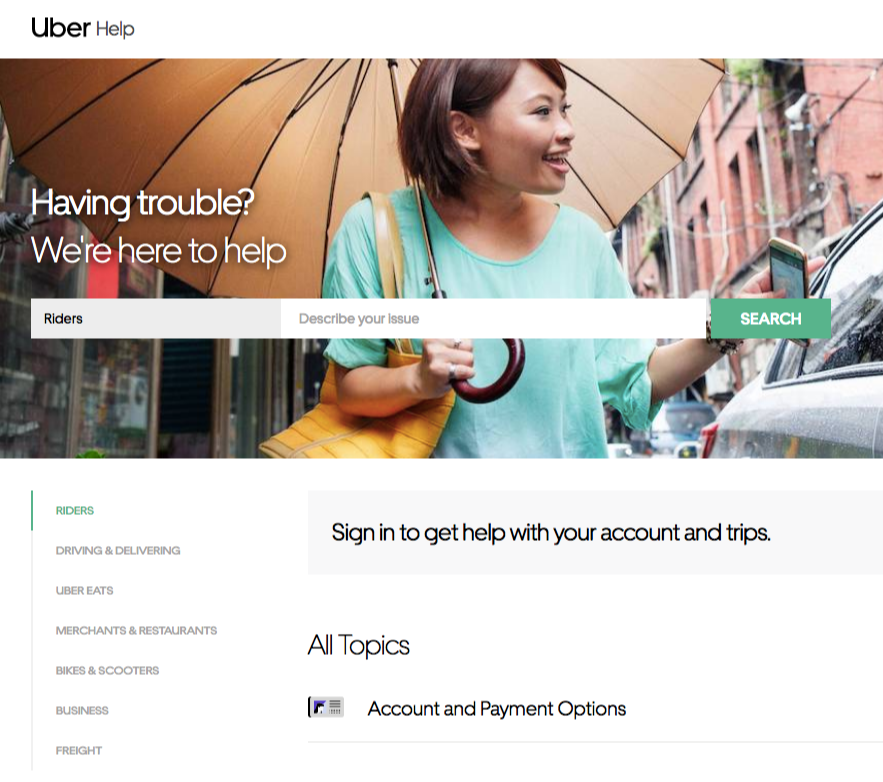
Provide tips from certified experts and industry practitioners.
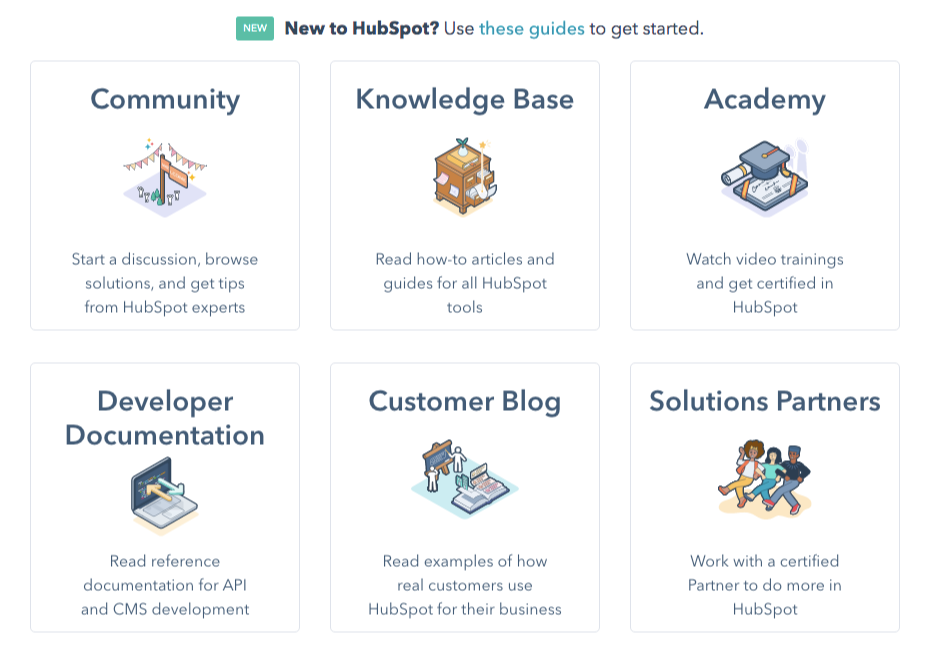
You earn fresh links from people you've helped. They will talk about it on forums and blogs.
The reason is simple:
They found your guides, tips, and product features helpful for their communities.
See the number of links Hubspot and Uber earned with their Help Centers.

You can check out our link building services and SEO services for SaaS.
Discover Untapped Link Opportunities From Google Play
If you have created an app for your SaaS, this is for you.
Look at the people who linked to your app in Google Play.
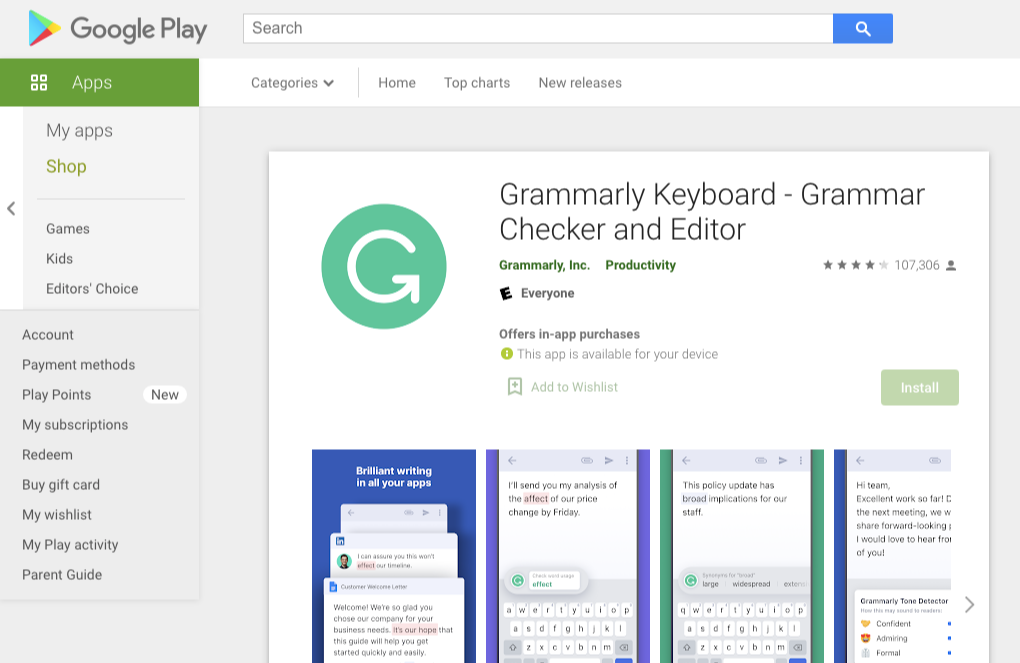
Then see if it makes sense to have another opportunity to get backlinks from them.

If they mention and link to you, they are familiar with your SaaS brand.
It makes sense to reach out again and offer another value in terms of content.
Make a list of all people who linked to your app — who can be your backlink prospects for another link building campaign - i.e., guest posting.
Execute another link building campaign for your new list of backlink opportunities.
Use Product Hunt To Earn Branded Links
Product Hunt is your go-to website when finding the best new software in the market.
It's also a great way to get feedback from SaaS founders, marketers, and the tech community.
If you want more new customers for your software, launch it on Product Hunt.
As you get traction, you earn eyeballs from publishers, tech content creators, and linkers on different websites.
That way, you earn new links to your SaaS brand.
Take LeadForms, for example:
After launching their software product to Product Hunt, here's what they got:
- Generated over $10,000 ARR in the pipeline (some super highly qualified leads)
- Close to 2,000 unique page views
- A couple of backlink opportunities
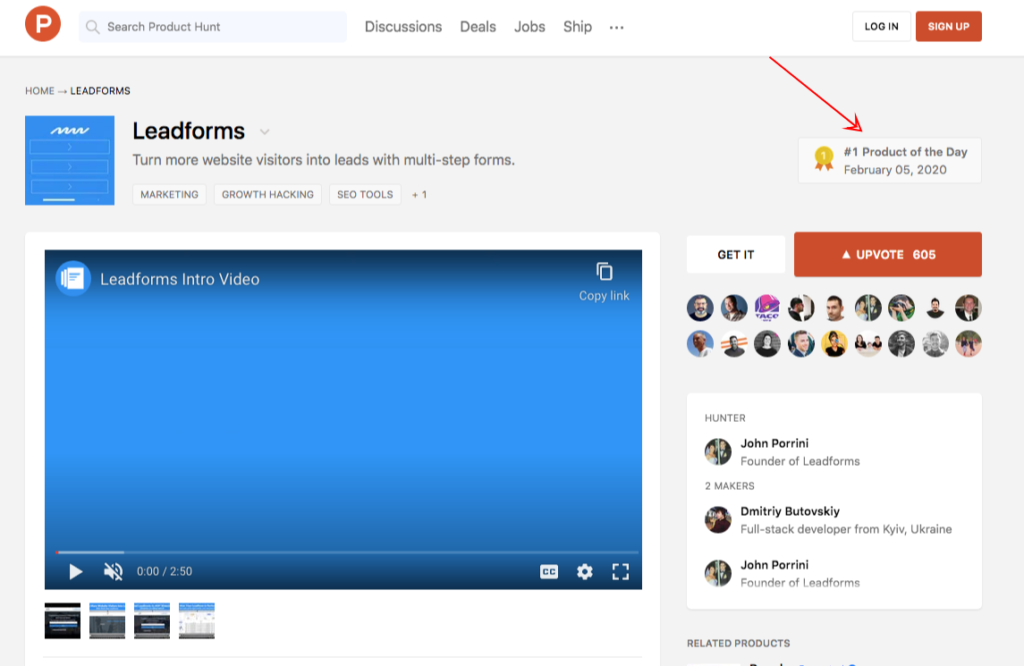
If you want to get more demos and trials, and increase your MRR, submit your SaaS strategically on Product Hunt.
You don't spam people. You don't force them to upvote and support your product launches.
Product Launch is a community. So, contributing value first should be your utmost priority.
You build your own community long before the launch. So when you start launching your software, you'll already have a bunch of people to support you.
Here are some examples of successful Product Hunt launches:
Flawless
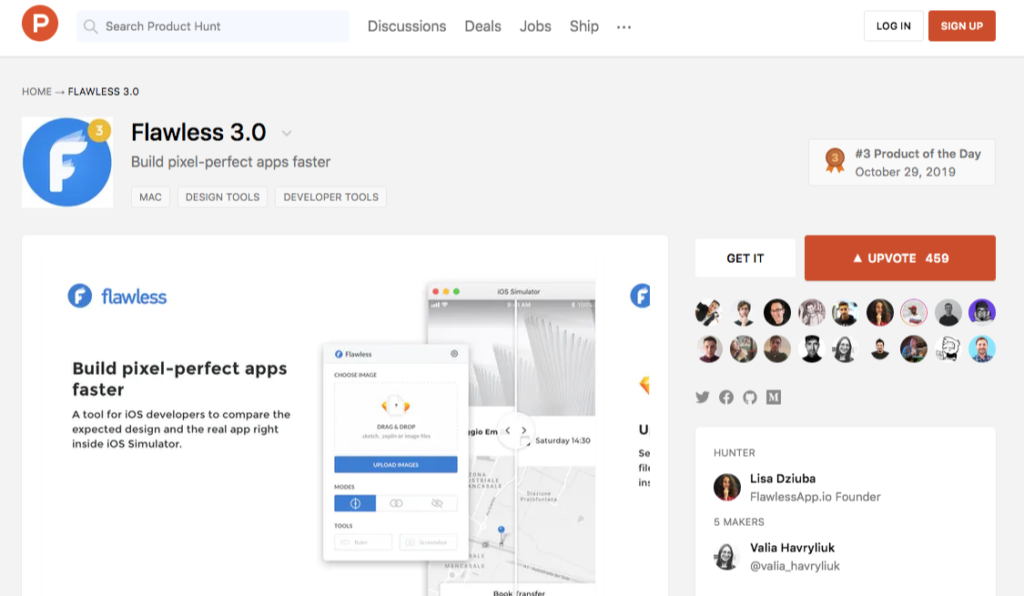
Quokka
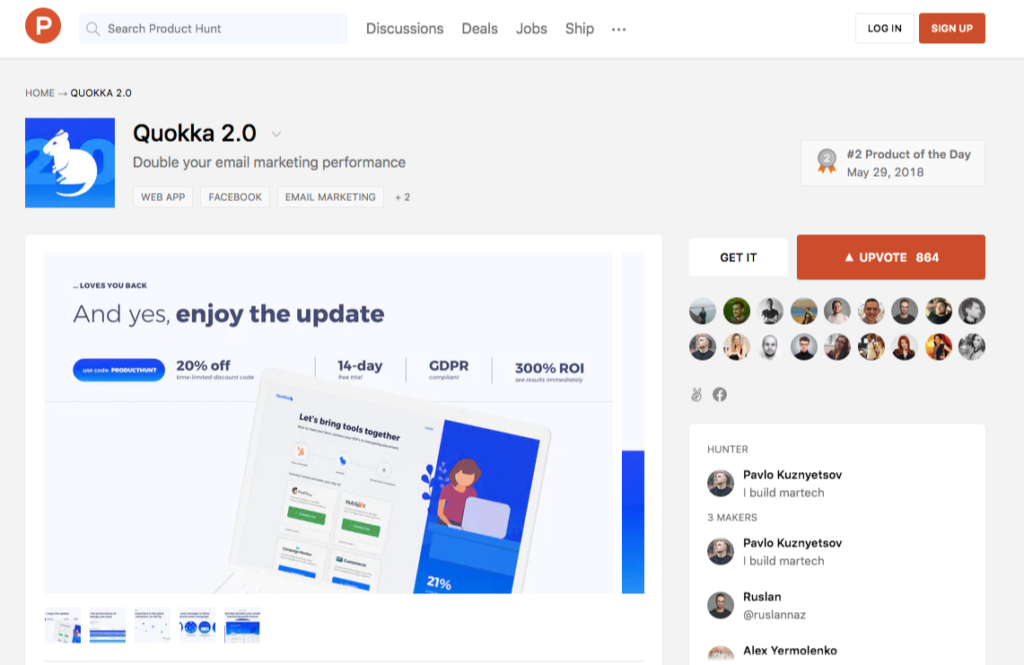
Weblium
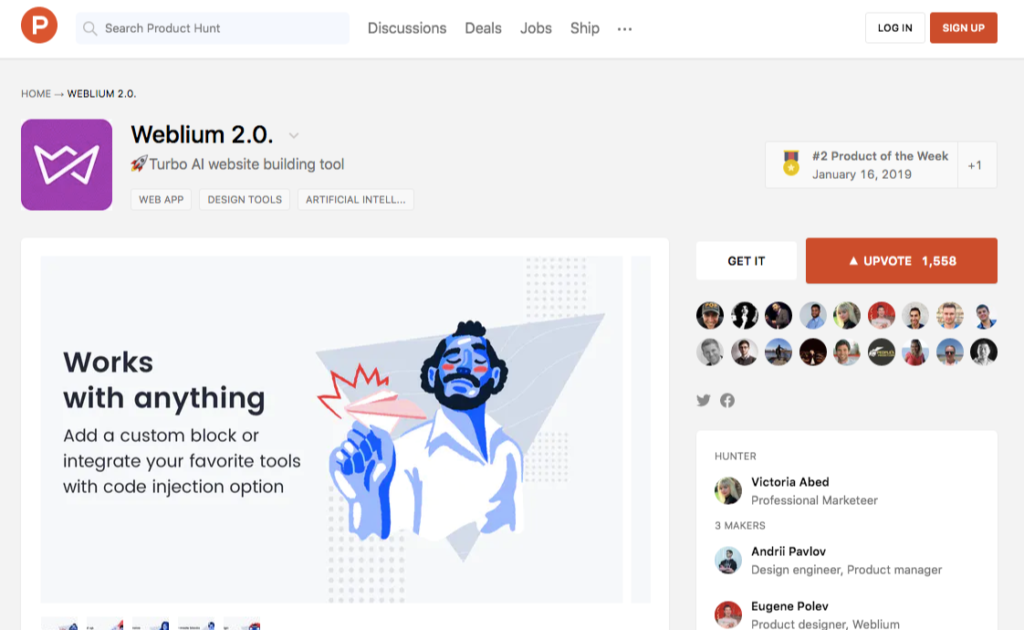
Optimize Your SaaS Landing Pages To Increase Linkability
Not all landing pages of SaaS are linkable. People don't normally link to sales pages unless it is worth citing.
If you have SaaS landing pages, you have to make them linkable.
How is that possible?
You include citable elements to your SaaS sales pages.
Add any of these micro content to your landing pages:
- Data or “findings.”
- Direct quotation of a source.
- Defining jargon and industry terminology for the layperson (aka definitions).
- Pricing Guides or Generalized Pricing Information.
- Images, Videos, Widgets, Downloadables.
- Detailed, Multi-Faceted Metrics-Based Reviews.
- Tips/Advice Directly Related to Products/Services on the Page.
- The Origin Story.
- Supplemental Outbound Resource Links
These are content pieces to increase the linkability of your sales pages. The more you have them, the easier for you to persuade publishers, bloggers, and industry content creators to link to your page because your content is worth referencing.
For example, Proposify added new free templates to their website for potential customers. These have been branded assets that generated hundreds of links.
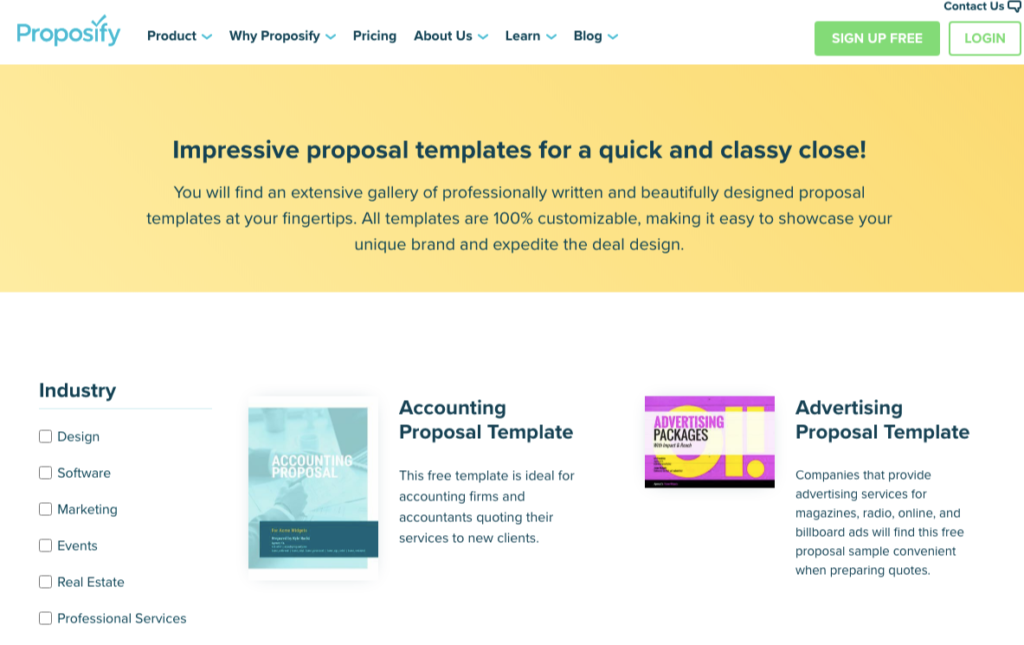
Another example is Quickbooks Sales Tax:
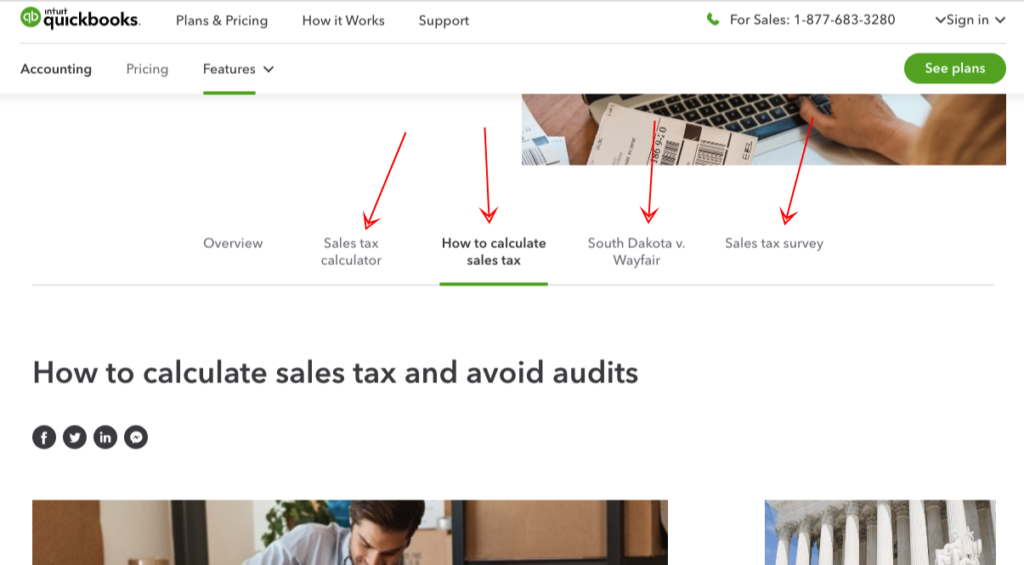
You see that they have "sales tax calculator", "how to calculate sales tax", and "sales tax survey".
These are all citable elements that will give publishers a reason to link to your sales page.
The next part is:
Reach out to people who might be interested to link to your sales pages. And expect to increase backlinks to your SaaS website.
Make Your CEO A Hero In Stories
Every software as a service brand has a story to tell to the world. And that's a huge advantage.
Journalists and reporters are hungry for interesting stories. They're looking for success stories of tech founders who've grown their startups to thousands of customers.
They also ask for quotes, tips, and advice from industry practitioners.
Here's the thing:
if you have stories, you can get more visibility and links for your SaaS website.
Plus, you'll get new customers by being featured on top publications — if these publishers bring referral traffic to your website.
Does your SaaS have any interesting founding story?
What about unique problems your tech product was able to solve on its own?
If you want to get great coverage on major publications, think about stories as your product.
Here is one example.

If you don't have a partnered PR agency, you can get your stories known using HARO.
You can check out this step-by-step guide on how to use HARO.
Create A WordPress Plugin
Most webmasters use WordPress as their CMS.
For ease, most content managers and publishers want to use plugins to integrate tech products useful for their websites.
The best thing?
Create a WordPress plugin.
If your SaaS has logical benefits for ease of integration with WordPress, that's a big plus for your customers.
The next big thing is you get backlinks from WordPress users and tech publishers.
One more: you get new customers searching when your plugin is featured in the WordPress directory.
Take Hubspot again as an example.
They've created a WordPress plugin to integrate their software products inside the WordPress website.
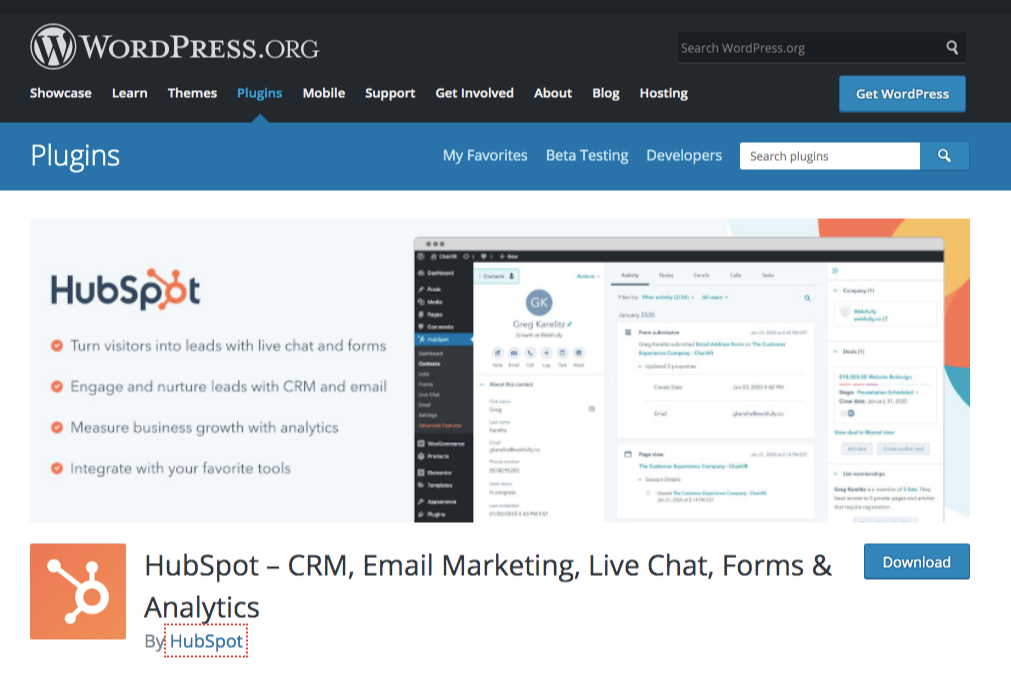
Built natively into WordPress, their customers can do meaningful tasks in CRM, email marketing, and analytics.
As of now, their Hubspot WordPress page earned over 1800 links.

Use Your Affiliate Program To Increase More Links
Affiliate programs are one of the best ways to grow your customers.
And the best part: you increase your backlinks by creating an affiliate program.
If you already have one, you just need to find bloggers and content creators who publish reviews and articles about niche products on their websites.
These are industry publishers who can write reviews about your product.
Of course, you get links from those product reviews.
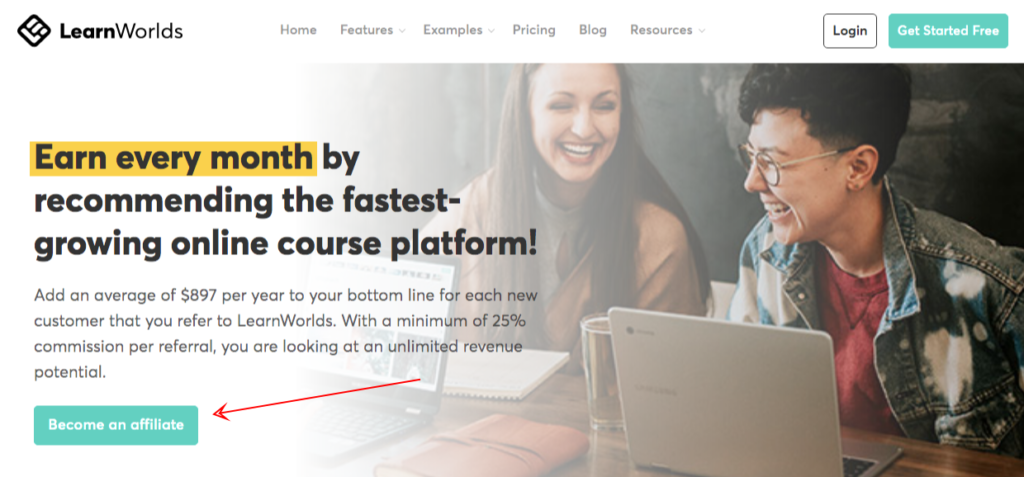
Here's how you do it:
Try to search for "your competitor" + "review" on Google.
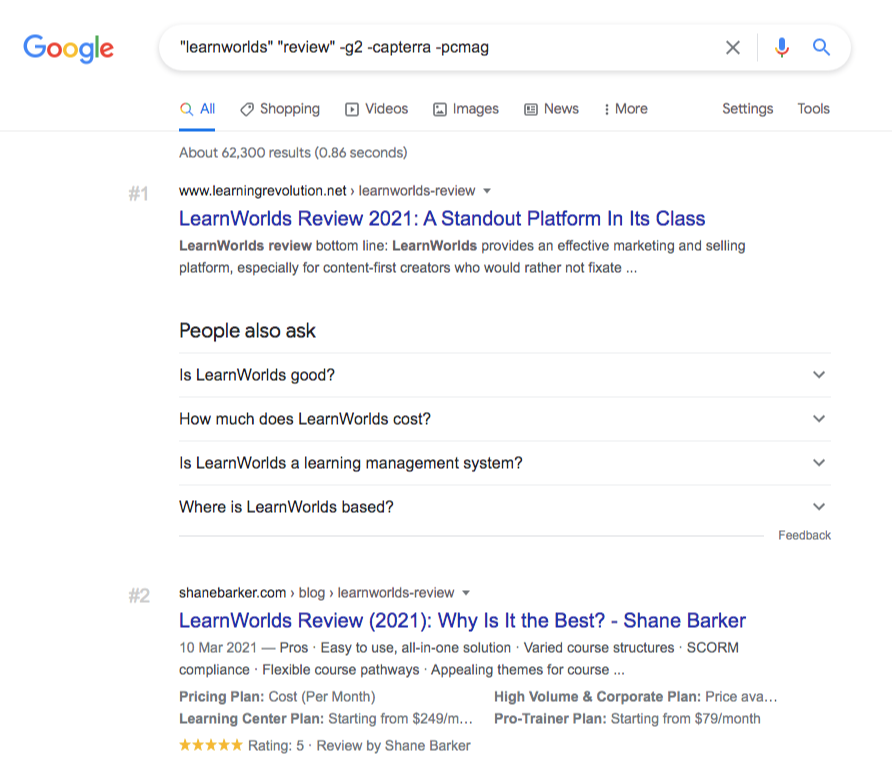
You'll surface a bunch of review articles of your competitors.
Leave the review websites like Capterra, G2, PCmag, etc..
For bloggers and publishers who write product reviews for your competitors? Reach out to them.
Publish Learn Hubs To Increase More (Targeted) Traffic
Read these statistics:
85% of large Saas businesses own a blog.
36% of SaaS companies use their blog to share content that educates. (SaaSX)
More and more software companies understand the power of content marketing in generating new customers, trials, and demos.
That said, how can you make sure your blog stands out?
Instead of doing what everyone is doing.
You do this:
You create what we call, "Learn Hub".
Learn Hubs are basically resource or knowledge centers.
Basically, you create an online library wherein you publish different pages that systematically target keywords within a topic.
The catch here?
You keep readers engaged on your site because each content piece lives closer together.
And because the entire "learn hubs" consists fully of highly valuable content assets, it's much more linkable than other competing individual pages.
For example, Canva's Learn Hub on design has generated over 3,000 backlinks and is currently ranking #1 for the key phrase: "free design".
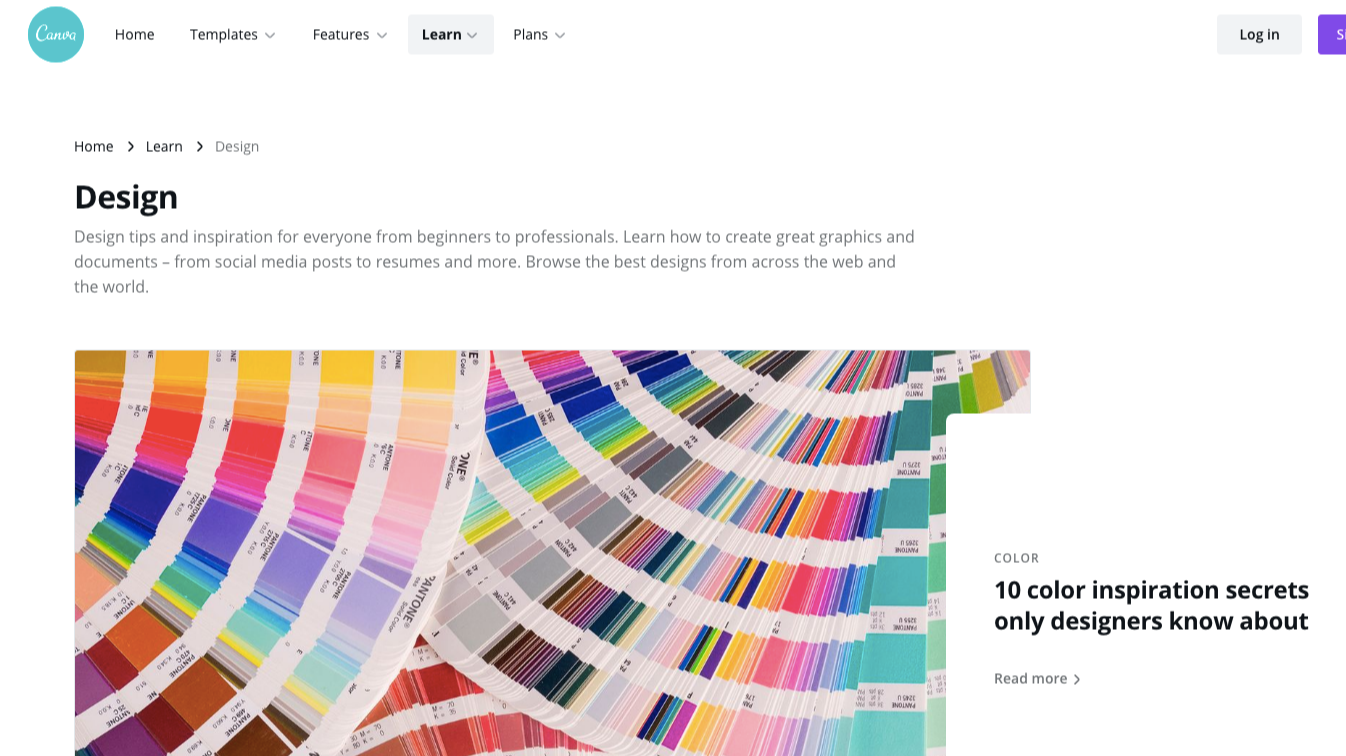
Another example is from Freshbooks. Its Small Business Resource Hub is one of the top resource centers on accounting and invoicing for small businesses.
Freshhooks' "Learn Hub" ranks for over 355,000 keywords, with 3,200+ backlinks pointed to it.
Use High-Quality Custom Tools To Generate Links
Here's the good thing with tools:
It helps in automation and simplicity of work.
And for the most part, generating high-quality backlinks to your website.
For example, Gusto has a full library of different payroll and HR tools that currently generates over 2,000 backlinks and over 40,000 monthly sessions, according to Ahrefs.
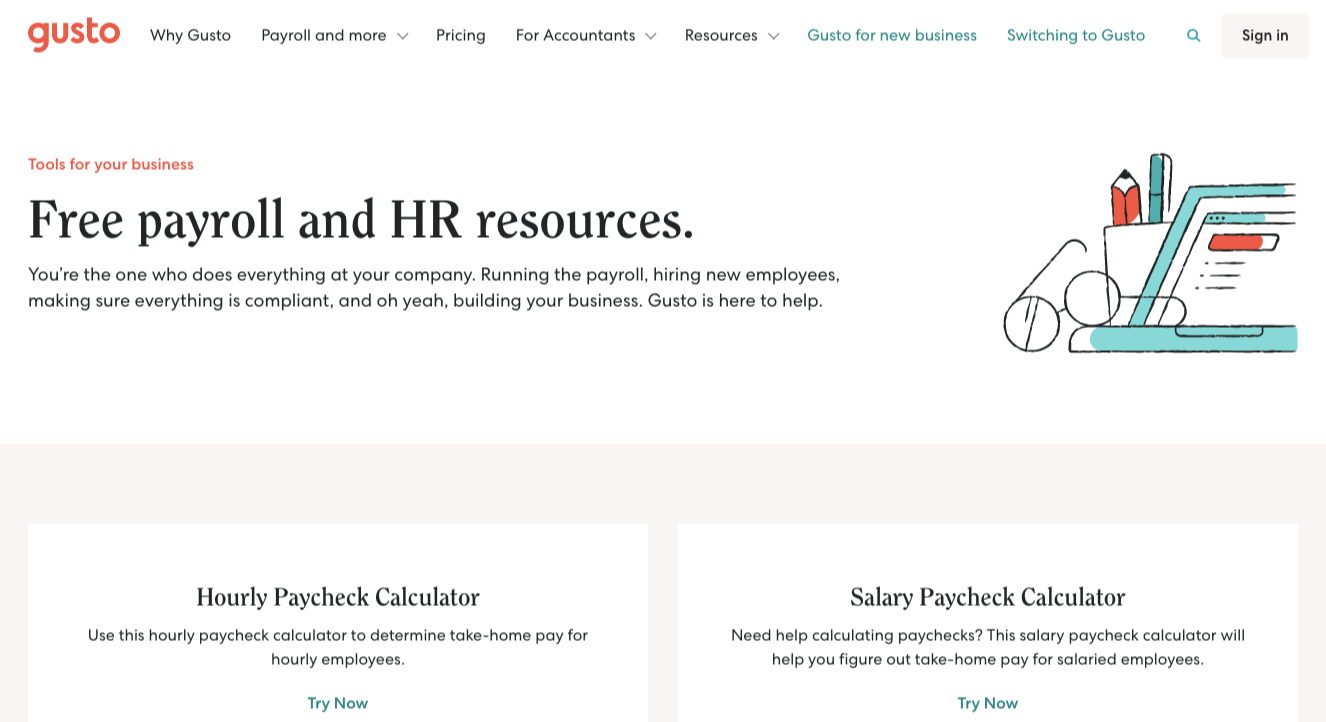
Software companies like you, won't have a hard time creating custom tools.
You do this as a product team.
Are there any estimated calculations your potential customers must make to arrive at a decision to purchase your SaaS product?
Do you have in-house spreadsheets that you can share with your audience to increase their efficiency on certain tasks?
Start with one tool. Then promote it massively to your target audience.
Add another tool to your /tools section. Promote it again to your audience.
You build a momentum of link earning as you build sets of custom tools for your audience.
Submit Your Website To Software Directories
You can't ignore the basic stuff:
Submitting your SaaS website to software directories.
You simply have to submit details about your brand, and some other information needed for submission.
Here is a free list of software directories.
[optin-monster slug="d8inb7n79yg0nnusgjag"]
Discover Content Patterns In Your Industry
The #1 mistake content marketers make is:
Not doing enough research before creating the content…
The reason why they don't get enough results when they start to promote their content assets.
One content strategy that gets you backlinks is discovering content patterns.
These are patterns — types and formats of content that already have worked in your industry.
How can you do that?
Start to reverse engineer top publications in your target industry.
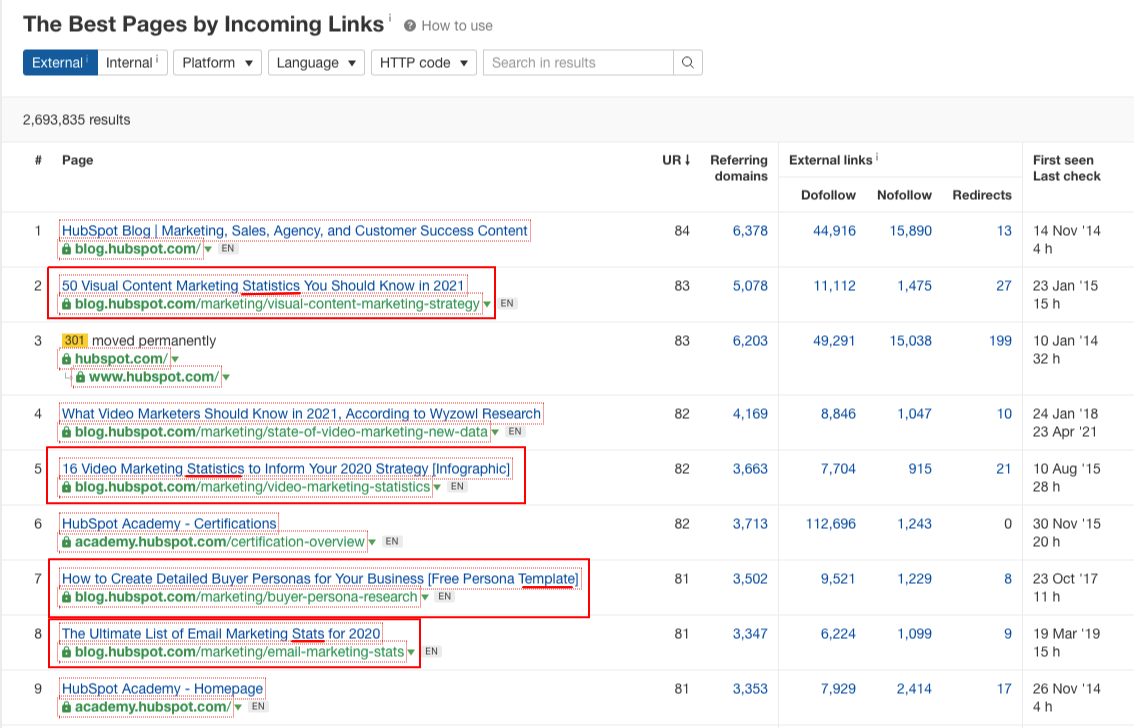
And see what types of content they consistently publish on their blog.
Model the same format in your SaaS blog and have a higher success rate in backlinks.
Use Tangential Topics To Discover Guest Post Prospects
Guest posting is one of the scalable link building strategies online.
But what's more interesting is:
Guest posting drives more traffic and more potential trials and demos to your software website.
Think about it:
If you write an article for an industry blog, and one of its readers read your content. You build trust among these readers.
They like you, and they'll buy from you.
But how can you know what industry blogs to target for guest posts?
The answer is to think about the specific problems your SaaS solves in your market.
We call as "tangential topics".
These are not the main core topics in your software blog.
But they're related to the solutions your SaaS is trying to solve.
Examples are:
Project management software helping freelancers do remote work.
Workflow software helping HR departments grow their businesses.
Productivity software helping small business owners manage their remote workers.
You see:
So you don't just limit your guest posting strategy with your main target audience.
But you're thinking about who are other audiences who might benefit from the solutions you're trying to solve in your space.
How?
Start with Google search
Use intitle search operator to find blogs with your target tangential topics.
See the example below:
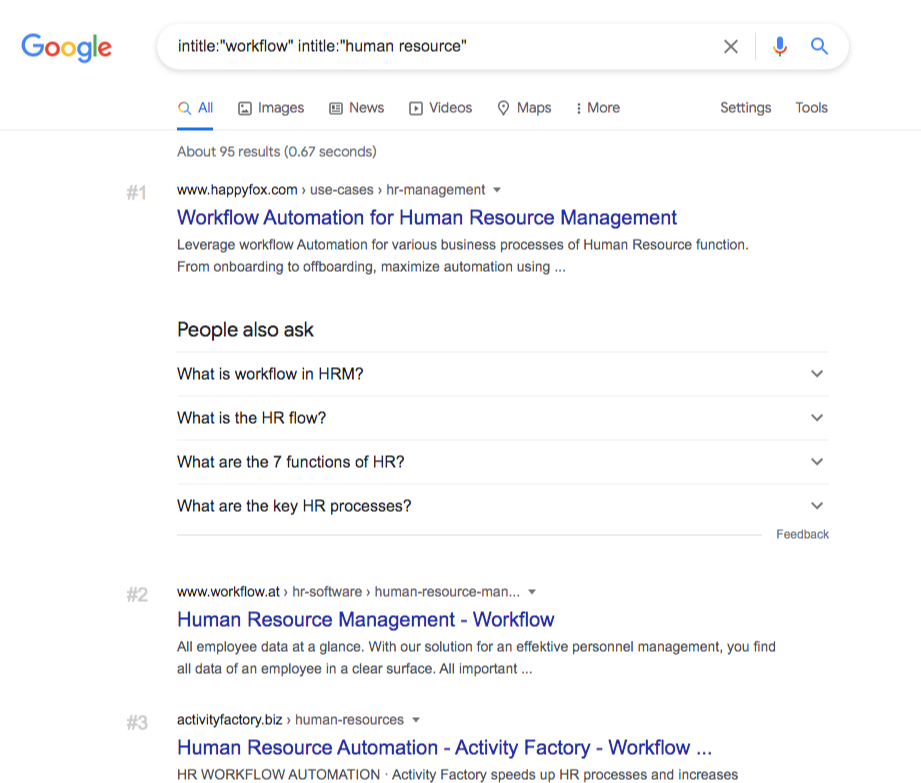
Make a list of all these industry blogs and target them as your guest post prospects.
Do this again after a couple of months. And you'll never run of your target guest blogs.
Publish Industries Pages
Do you want more trials and demos?
I'm sure you do.
It's only possible if:
You're not just niche-targeting, but also widening opportunities in targeting industries.
That's the best thing for software companies.
You can target different audiences.
For example, SimpleTexting created several "Industries" pages for their SaaS.
Text messaging for Car Dealerships:
Text messaging for Property Management and Landlords:
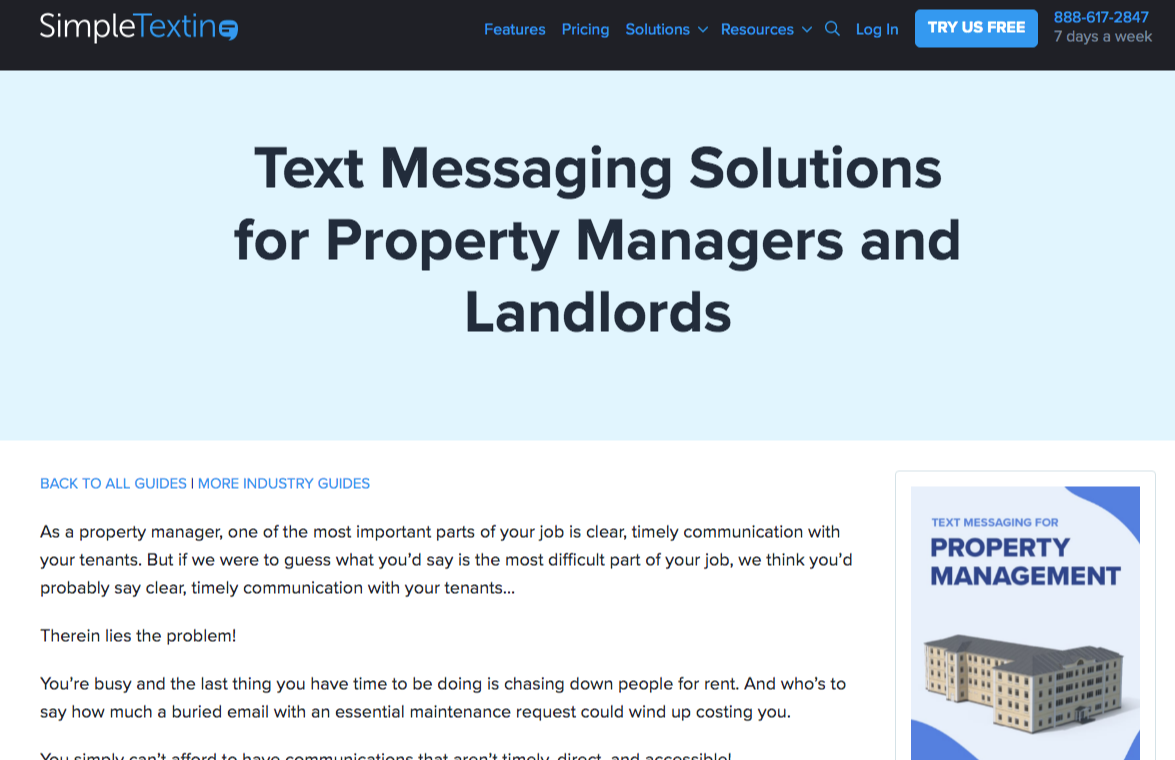
Text messaging for Fitness Centers and Gyms:
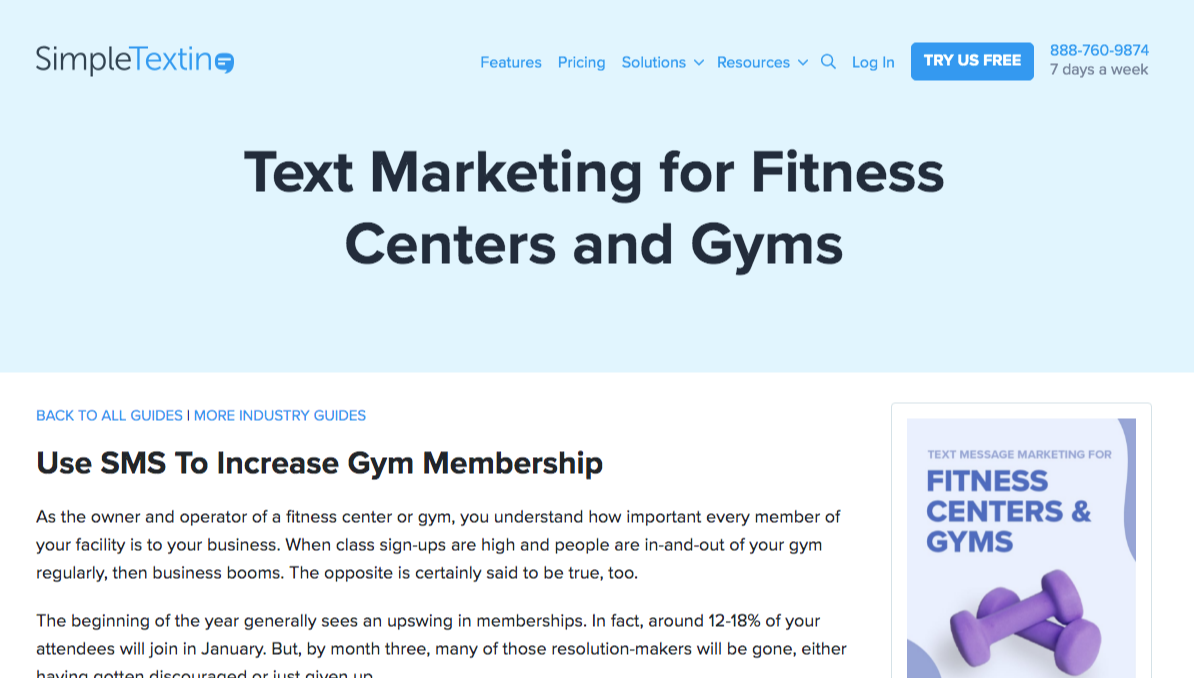
Industry pages work well in helping you drive audience-specific links.
In our given example, Simple Texting can reach out to car dealership blogs, property management blogs, and fitness blogs.
That translates to tons of links rather than just focusing on one niche.
Build Easy Links From List Posts & Comparison Guides
What's the common buying pattern of your potential customers?
Simple: They look through different solutions, choose which product they think that they can solve their needs, and decide for a trial or demo.
The reason why:
There are a lot of list posts (sometimes called, "listicles") and comparison guides in the software industry.
Bloggers, publishers, and content creators have "top 10 for [insert solution" articles.
You know what?
You can take advantage of these listicles and comparison guides to get links.
But you first have to start discovering them. How?
Plug in your competitor's website in Ahrefs to see who linked to them.
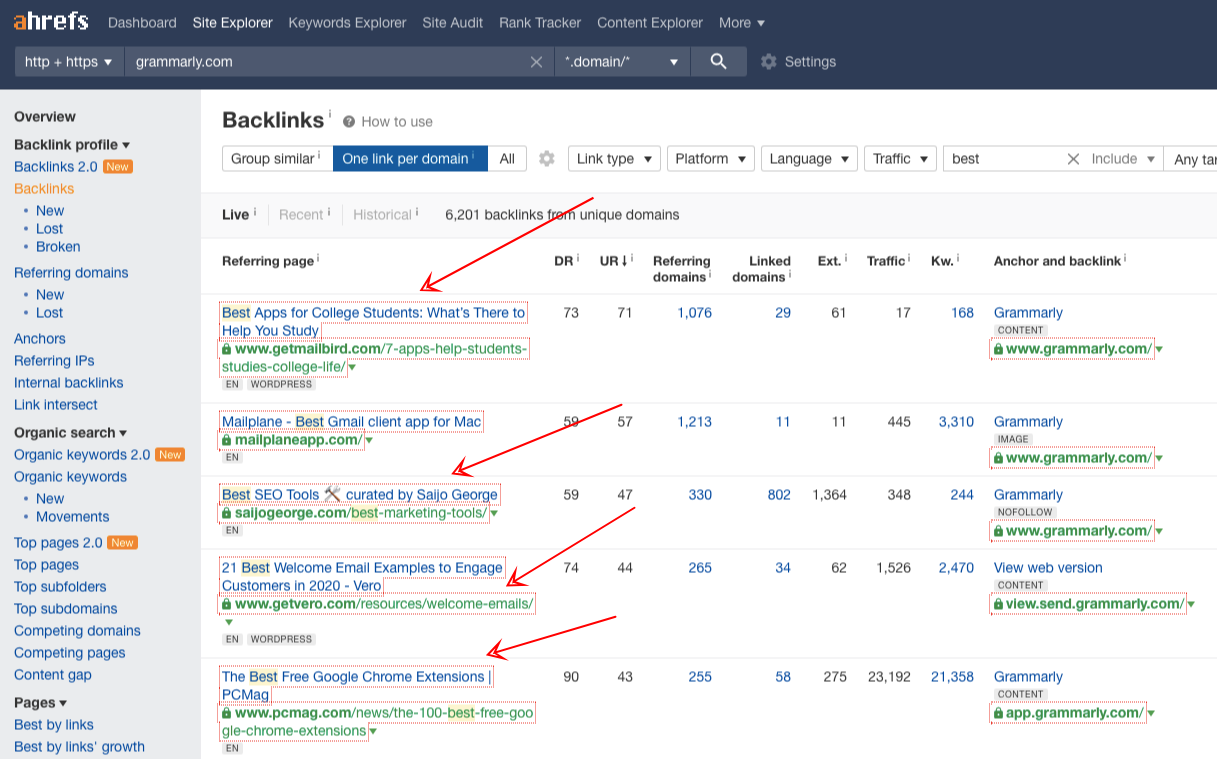
Go to the Backlinks section.
Add filter keywords such as:
- Best
- Top
- Tools
- Software
These will give you results of pages with any of these keywords in page titles.
Reach out to them and request your SaaS to get featured.
Pro Tip: Offer basic or premium account access to your online software to increase your link placement rate.
[optin-monster slug="eb0peyi0atyximzovsgv"]
Turn Brand Mentions Into Product Page Links
Most SaaS websites have lots of homepage links.
It's a good thing but:
If you want to maximize results in link building, you need more relevant more targeted links.
What can you do?
Turn your brand mentions of products into product page links.
Step 1: Look for brand mentions.
You can use Ahrefs to track them easily.
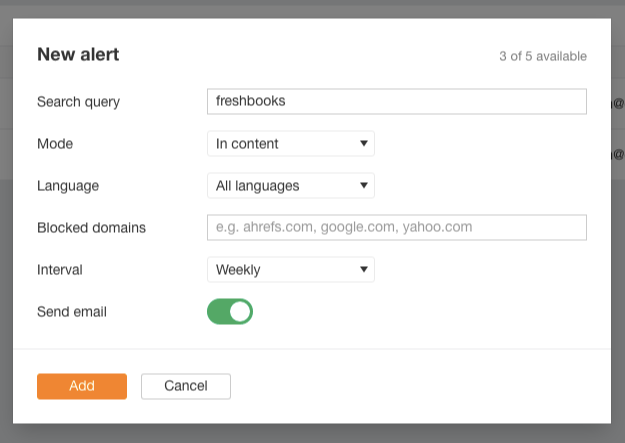
Or use Google Alerts to find these blogs that mentioned your SaaS.
Step 2: Reach out and ask to update their links to a more relevant page.
Given they have mentioned your online software in their articles, a simple request for change of links to a more specific page (your product or template page) is doable. for webmasters.
Here is a simple email outreach script that you can use:
Subject Line: Quick question for your [Name]
Hey [Name],
It’s [Your Name] here from [Their Website].
I was just looking through my backlinks and noticed you mentioned me in this post: [Link of the page where you got the link]
However, I noticed that although you mention a particular blog post of mine [Topic of the page that mentioned your
website], you actually linked to my homepage rather than the blog post itself.Any chance it would be possible to swap the link out for a link directly to the blog post instead?
No worries if not, I just think it’d make more sense in the overall context of the post (as people may be interested to
read that post).Either way, have a great week!
Thanks,
[Your Name]
Publish Statistics Page In Your Industry
People want to know different things.
They do Google search for "how many people are X", "what is the number of people in X", how many users are using X".
These are numbers. Some pages have statistics to show off.
It's good for users. It's also good for link building.
Your software brand has data and numbers that might be valuable to your audience.
And is a powerful asset for backlinks from authority sites.
Many SaaS websites publish "statistics" pages.
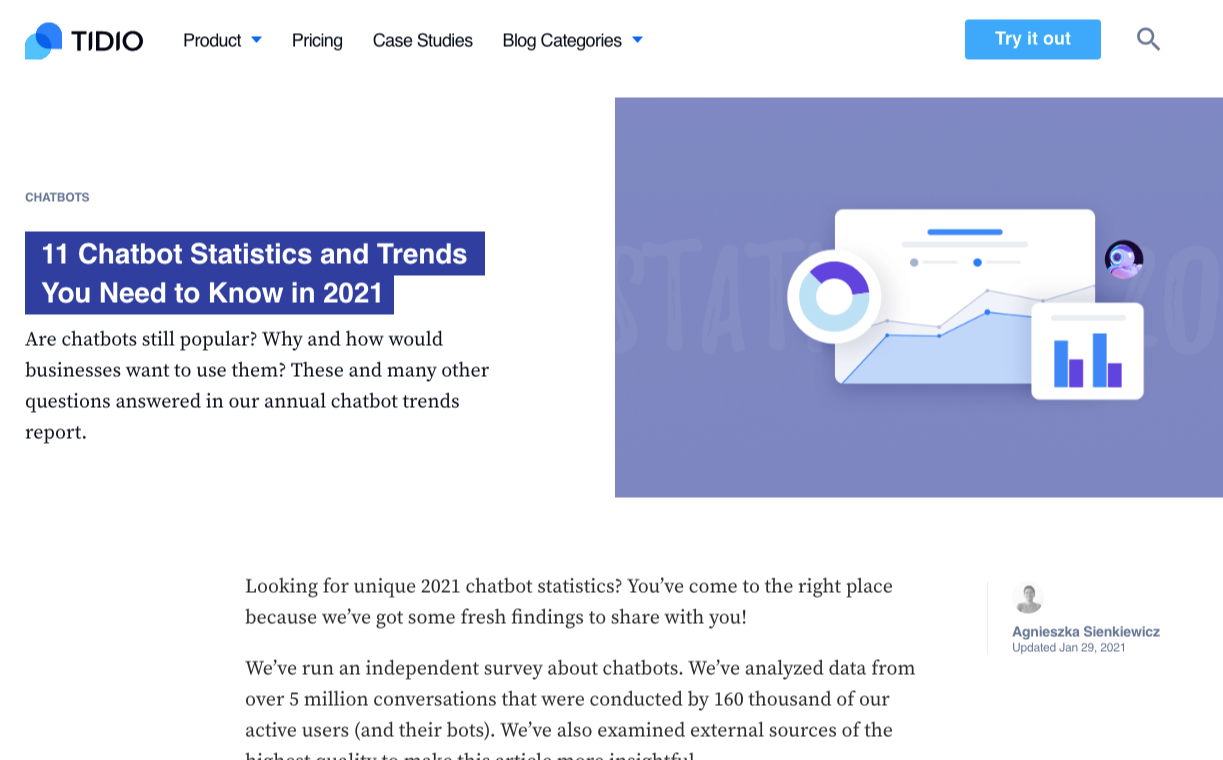
Hubspot Content Marketing Statistics:
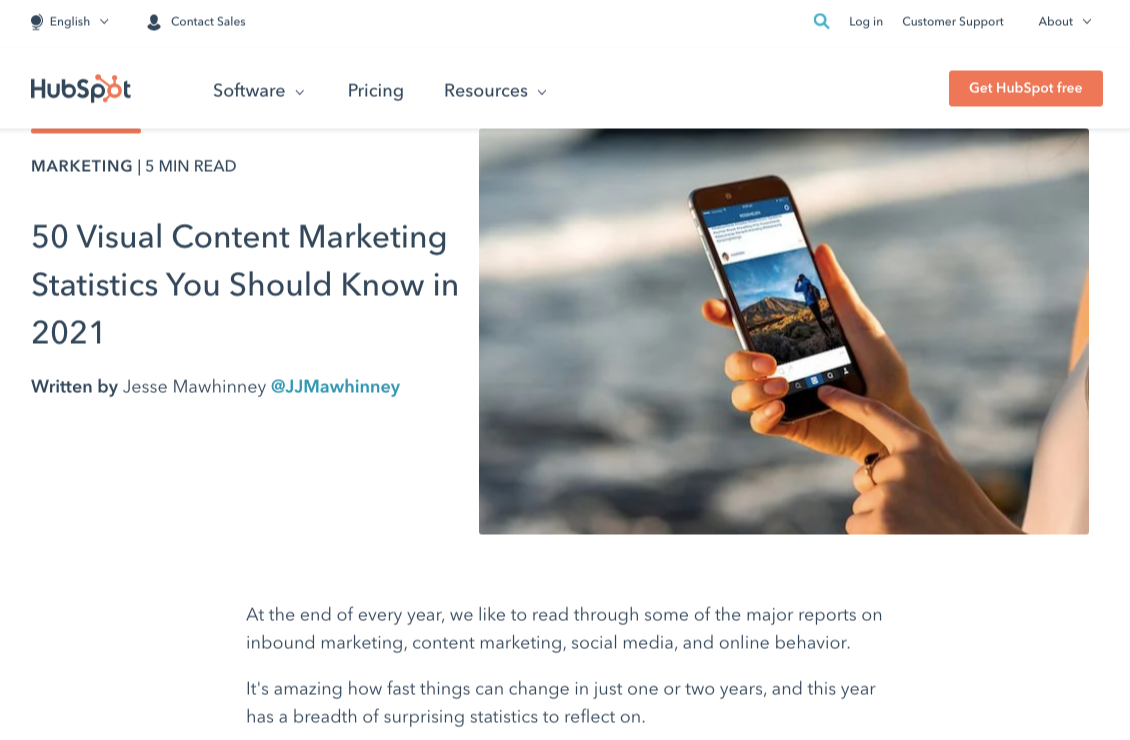
Simple Texting Remote Work Statistics:
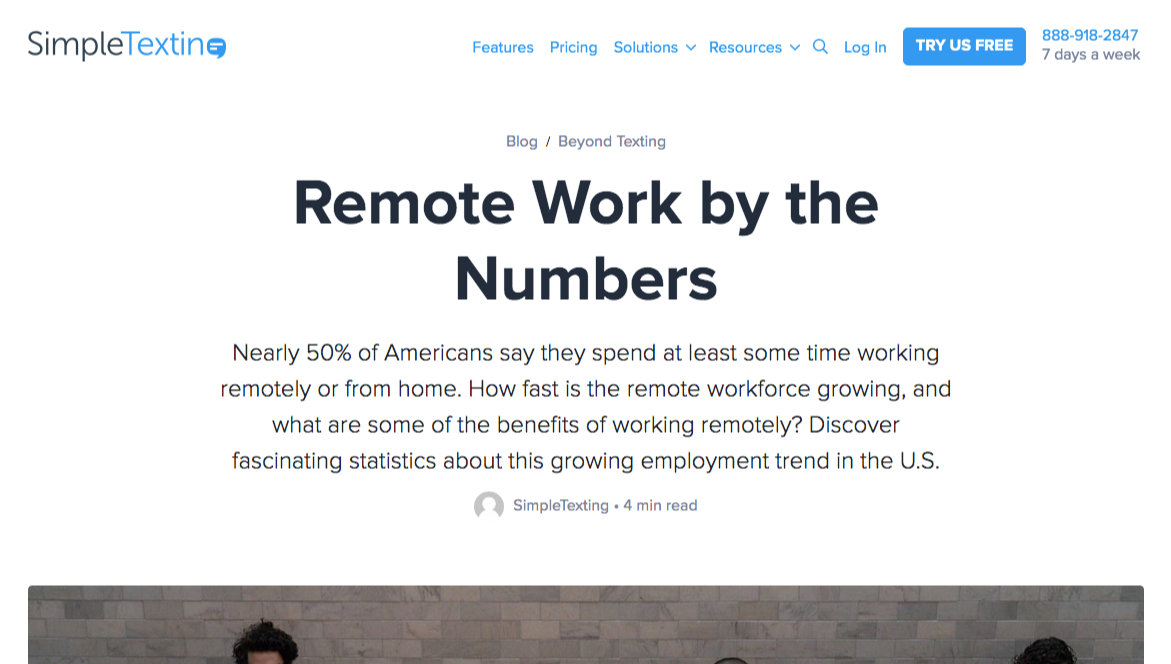
Publish your own statistics page.
Get information from your internal data in your company.
Or get data from top statistical sources such as:
Once publish, you reach out to people who might be interested in linking to the page.
Start with people who have previously linked to statistics related to yours.
Use Ahrefs to discover blogs, publishers, and websites that linked to your similar statistics page.
Go to the Backlinks section. Make a list of these backlink targets.
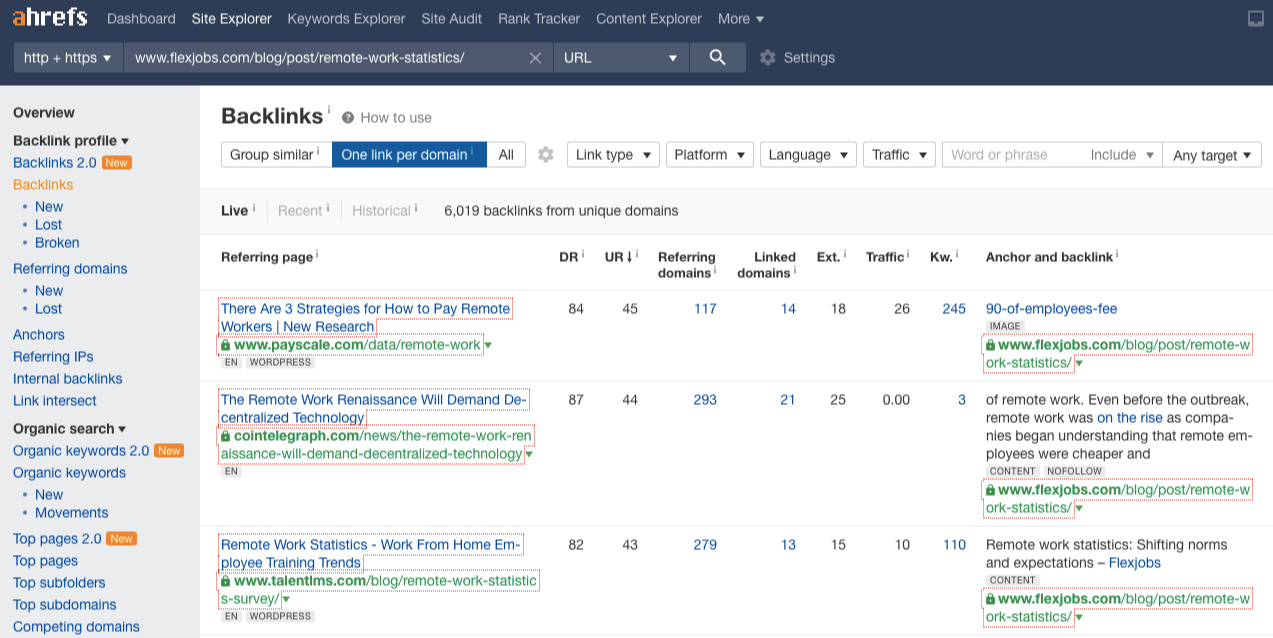
Reach out to them and promote your statistics content.
Hunt How-To Tutorials On Youtube
You should probably know that publishing Youtube videos is a great way to generate brand awareness and drive new customers to your SaaS website.
But there's one more thing with Youtube videos:
It helps software companies to bring new inbound links to their websites.
How?
By publishing tutorials on how to use your product for meaningful tasks.
For example, Trello has tons of videos on how to be productive using their tools.
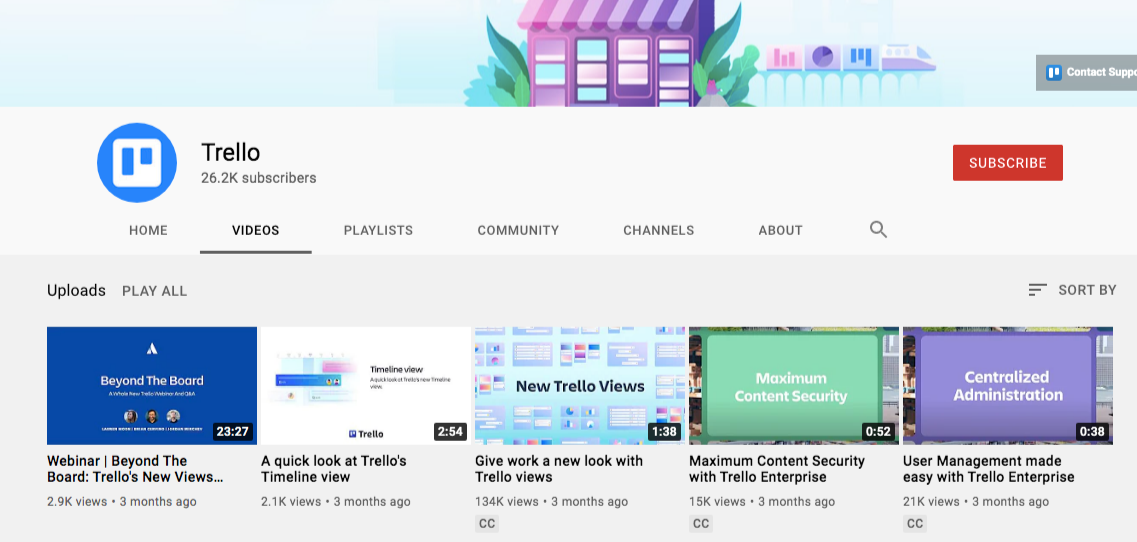
Instead of putting out an article on how to use Trello, a better demonstration of their SaaS features is through how-to videos.
Another example is putting out videos of app integration with your software.
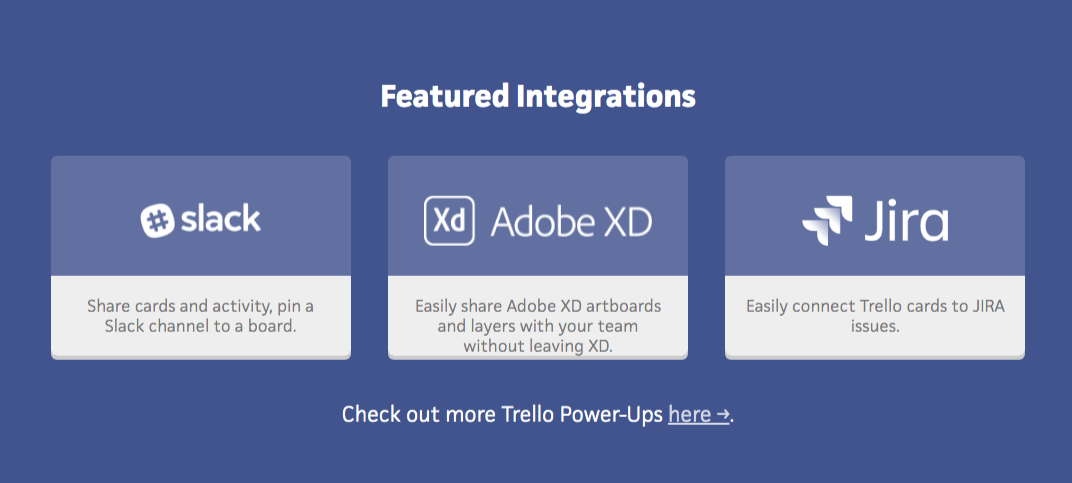
This helps your brand get in front of people using those integrated apps.
Those are link opportunities at hand.
You can track blogs that mentioned your SaaS along with the integrated app.
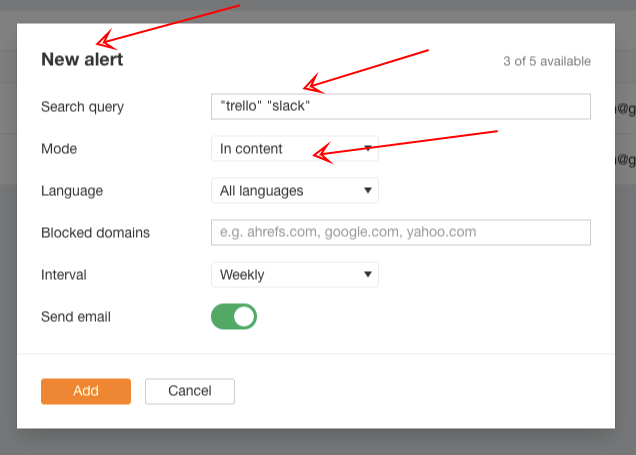
And even reach out to content publishers who've written a post on a topic of your Youtube video.
By sharing that it adds more value to their readers, if there's a how-to video that showcases the exact way of doing the task, you're likely to increase the chances of getting backlinks to your website.
Appeal To Sales People With Your Software
Audience-first link building.
It is your ability to think first of your audience, as it dictates what link building strategy to use for your software website.
Besides your main audience for your SaaS blog:
HR people, CIOs, small business owners…
…you can also target salespeople
Salespeople have high intent in social sharing and referencing valuable resources.
For what reason?
Simple: They get more money by doing so.
If they want more sales, they have to educate more their audience, especially if their offers have a longer sales cycle (e.g. 3 to 6 months before a person purchases their offers).
Trigger the emotions of salespeople by appealing to them with your SaaS content.
Think of ways on how to appeal to salespeople.
Use Google to find titles and topics that go near to your brand's solutions.
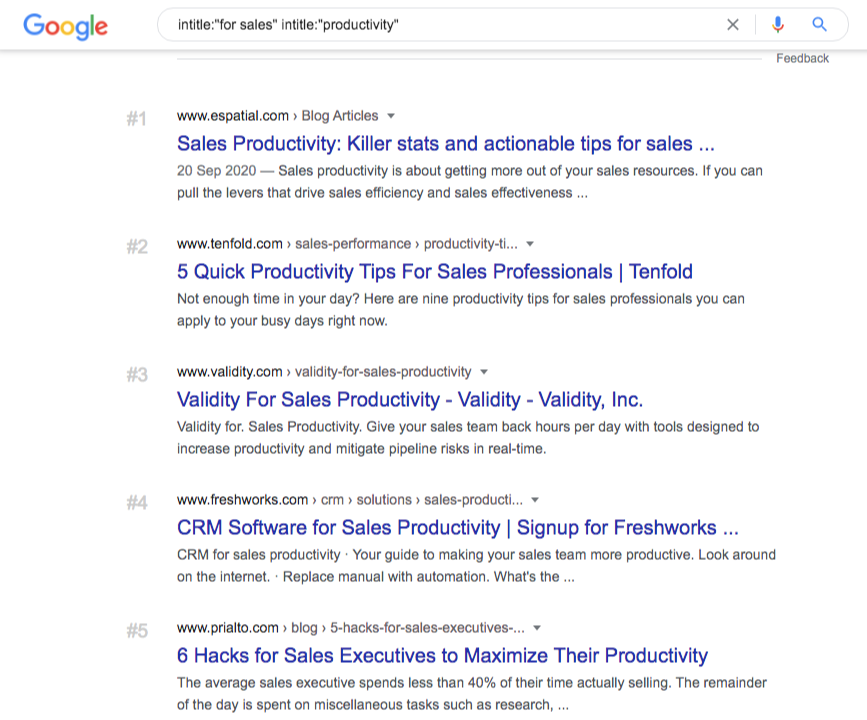
Here's The Next Step…
I want to turn it over to you.
Which one of the 19 SaaS link building strategies you're going to apply right now?
Will you optimize your SaaS landing pages to increase their linkability? How about publishing "learn hubs" to earn more links and targeted traffic to your website?
Either way, let me know by leaving a comment below right now.

